Starting a green thumb and growing plants as a beginner can be done regardless of the size of your yard. In this comprehensive guide, I will provide you with tips and advice to help you cultivate your own garden. Whether you’re looking to grow your own food or simply beautify your outdoor space, this guide is for you. I’ll cover everything from selecting the right plants to choosing the best gardening spot.
Key Takeaways:
- Gardening is a great hobby for beginners, regardless of yard size.
- It’s important to consider factors such as location, yard size, and gardening goals before choosing what to grow.
- Choosing the right plants and gardening spot, and regularly tending to plants, are key to success.
- Gardening offers a variety of benefits, including fresh produce, exercise, and stress relief.
Considering Your Location and Yard Size
When starting, you need to consider where you live, the size of your yard, and the amount of time you have. Regardless of the size of your yard, there are ways to grow a garden that’s beginner-friendly. Start by selecting plants that are easy to care for and don’t require too much maintenance. Simple gardening techniques can be applied to small or large areas, and if you’re limited by space, there are options such as container or vertical gardening.
If you’re unsure which plants are beginner-friendly, do some research and ask for advice at your local nursery or garden center. They can guide you in selecting the right plants for your location and yard size.
| Location | Beginner-Friendly Plants |
|---|---|
| Hot and dry climate | Succulents, herbs, tomatoes, peppers |
| Cold and wet climate | Lettuce, spinach, carrots, peas |
Remember to choose plants that are suitable for your yard’s size and the amount of space they will need. Avoid overcrowding, and consider using trellises or stakes to support plants that grow upwards.
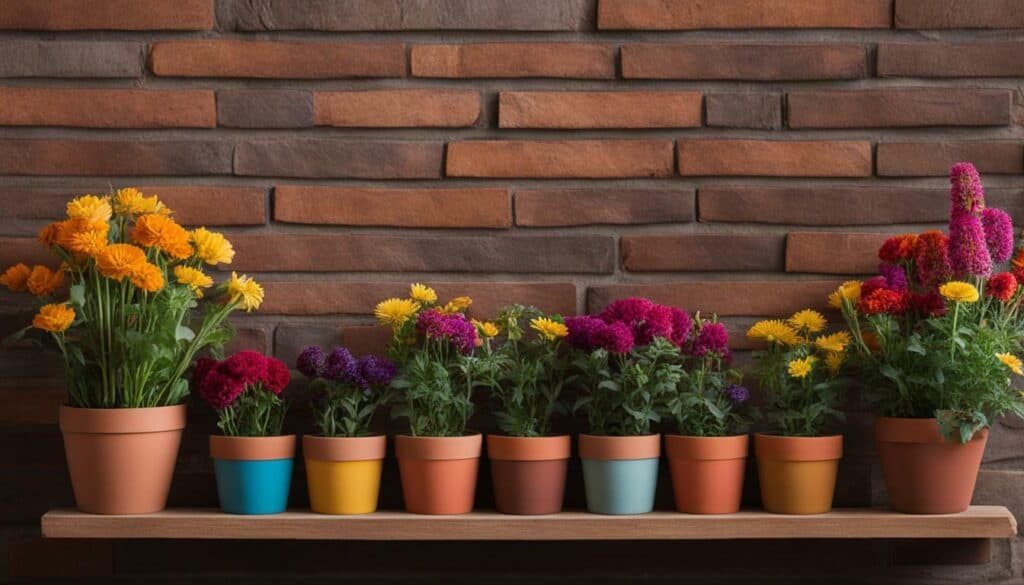
When it comes to selecting a location for your garden, ensure that it receives the necessary six to eight hours of sunlight. Avoid areas with excessive shade or moisture, as this can lead to plant diseases and pests. If your yard doesn’t receive enough sunlight, consider container gardening or investing in a grow light.
Determining the Purpose of Your Garden
Determine the purpose of your garden, such as sustenance or decoration. This will guide you in selecting the appropriate fruits, vegetables, or flowers to grow. For example, if your main purpose is to grow your own produce for sustenance, consider planting easy plants to grow for beginners such as tomatoes, lettuce, and beans.
When determining the purpose of your garden, consider factors such as the location and size of your yard, the amount of sunlight it receives, and the amount of time you can dedicate to gardening. If you have a small yard with limited sunlight, you may want to consider plants that require less sunlight or grow well in containers.
It is crucial to choose the right gardening spot that receives sufficient sunlight and has good drainage. If your plants receive too much or too little sunlight, it can negatively affect their growth. Good drainage is also important to prevent waterlogged soil, which can damage the roots.
Understanding the needs of your plants, as living organisms, is key to successful gardening. This includes providing them with the necessary nutrients, water, and protection. Simple gardening techniques such as adding compost to your soil, watering deeply and infrequently, and removing weeds regularly can help keep your plants healthy and thriving.
Lastly, acquiring plants can be done through transplanting, seed sowing, or propagation. When selecting plants, consider the climate of your region to ensure that they are suitable for your garden. Easy care plants for beginners such as succulents, herbs, and marigolds are great options to start your gardening journey.
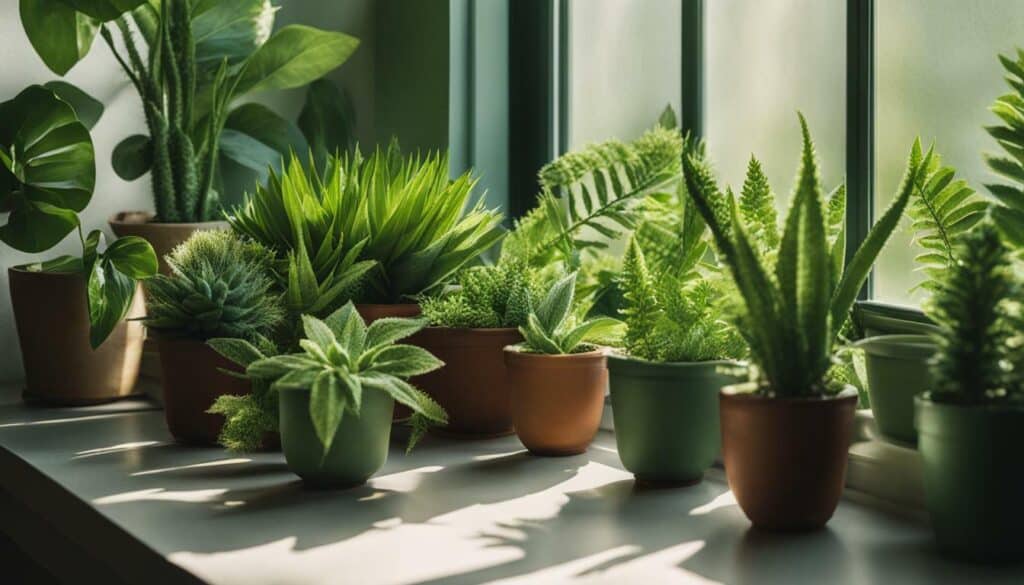
Researching Plant Options for Your Area
Research what fruits and vegetables grow well in your area and their specific seasons. This will give you a good idea of what to plant in your garden. The U.S. Department of Agriculture and Seasonal Food Guide can provide valuable information on what produce is available in your area and when.
When selecting plants, be sure to choose ones that are suitable for your climate. Plants that require lots of sunlight may not thrive in a shady yard, and vice versa. Consider the amount of sunlight your yard receives and choose plants accordingly.
Basic gardening tips include choosing plants that are easy to grow, such as tomatoes, peppers, and herbs. These plants are perfect for beginners because they require little maintenance and can be grown in containers if you don’t have a lot of space.
Once you’ve chosen your plants, it’s time to gather the necessary tools. Some basic gardening tools include a shovel, trowel, hoe, gloves, and watering can. It’s also important to use quality soil to ensure your plants have the nutrients they need to thrive.
Remember to tend to your garden regularly, removing weeds and protecting your plants from animals. Plants are living organisms and have their own specific needs for survival. By properly researching and planning, you can successfully grow a garden and enjoy the benefits of gardening, such as increased oxygen, free food, and tranquility. So why not start your garden today?
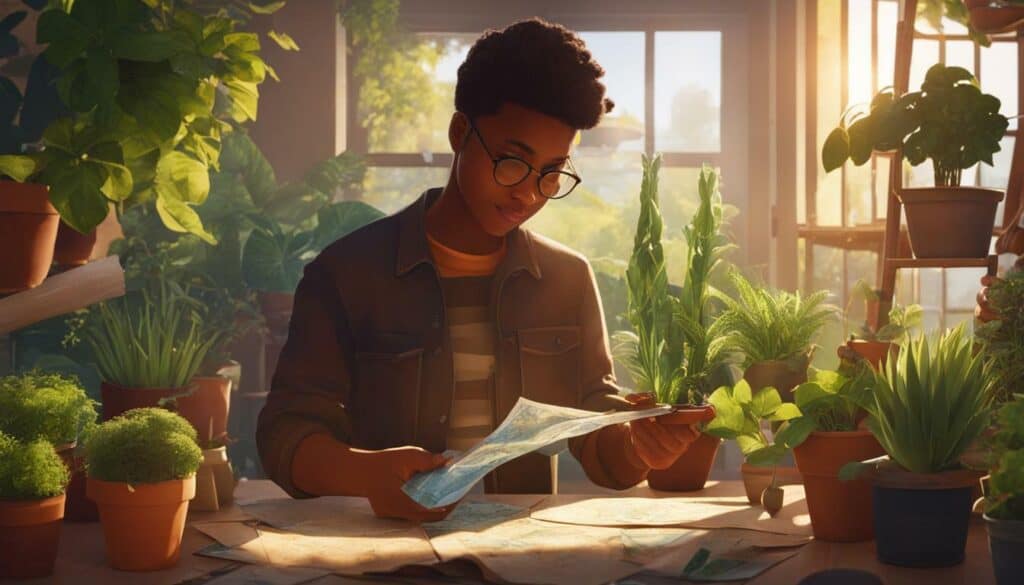
Choosing the Right Gardening Spot
It’s important to choose a gardening spot with adequate sunlight and proper drainage. When starting your garden, consider your location and the size of your yard. Reflect on the purpose of your garden, whether you’re looking for sustenance or decoration.
Different plants have different sunlight requirements, so pay attention to the amount of sunlight your yard gets. Avoid areas with too many trees and shadows, and aim for a south-facing garden in the Northern Hemisphere and a north-facing garden in the Southern Hemisphere.
Ensure that the gardening spot has good drainage and air circulation to prevent issues like mold and mildew. Before starting any digging or construction projects, make sure to contact the appropriate authorities to avoid hitting utility lines.
Choose plants that are suitable for your gardening spot, considering their sunlight and space requirements. Look for easy care plants for beginners that require low maintenance gardening. Invest in essential gardening tools such as gloves, shears, a rake or garden hoe, a garden fork or spade, a garden hose or watering can, and rich soil.
Regularly tend to your plants by removing weeds and protecting them from animals. Remember that plants are living organisms and require care and attention. Gardening offers numerous benefits such as increased oxygen, free food and medicine, shade, tranquility, and exercise.
Acquisition methods for plants include transplanting, seed sowing, and propagation. Consider your climate when choosing plants and ensure they are suitable for your region. With the right gardening spot, plants, and tools, you can create a beautiful garden that is easy to maintain and brings you joy.
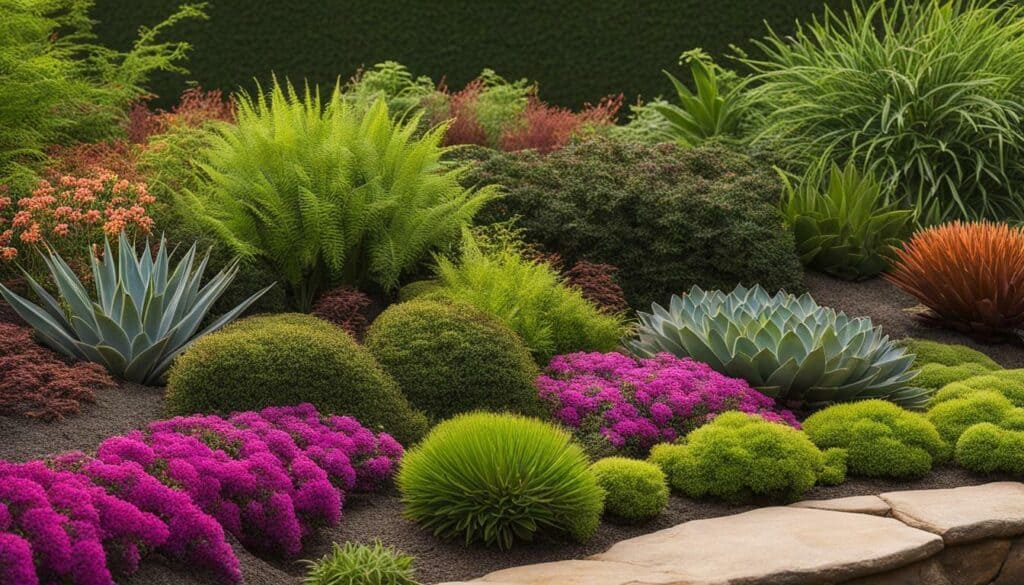
Gathering the Necessary Tools
Invest in gardening tools such as gloves, shears, a rake, a garden hose, and rich soil. These tools are essential for starting a garden, regardless of the size of your yard or what you want to grow. When choosing tools, it’s important to consider what you can grow based on your location and the size of your yard, as well as the type of gardening that you want to do.
Additionally, it’s important to choose a suitable gardening spot with adequate sunlight and drainage. This will help to ensure that your plants get the right amount of light and water, which are essential for their growth and development.
Selecting the right plants for your garden is also important. You’ll want to choose plants that are easy to grow and maintain, and that will thrive in your climate. This will help to ensure that your garden is successful and produces the results that you’re looking for.
In addition to selecting the right plants, you’ll want to ensure that you have the essential gardening tools. These may include gloves, shears, a rake or garden hoe, a garden fork or spade, a garden hose or watering can, and rich soil. These tools will help you to tend to your plants, remove weeds, and provide proper care.
Regularly tending to your plants, removing weeds, and providing the right care are all important for successful gardening. Remember, plants are living organisms and need food, water, air, and protection to stay healthy. By understanding the basic principles of gardening and having the necessary tools, you can cultivate your green thumb and enjoy the rewards of growing your own plants.
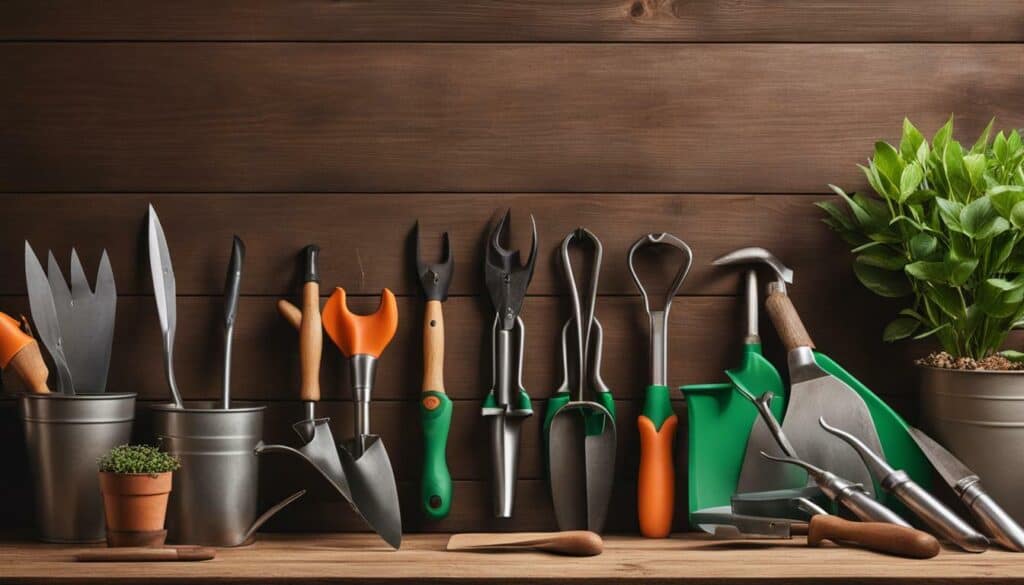
Tending to Your Garden
Regularly tend to your plants, remove weeds, and protect your garden from animals. Neglecting your garden can lead to numerous problems and decrease the health and growth of your plants. It is important to check on your plants daily, removing any dead or dying leaves and inspecting for pests or diseases.
Weeds can quickly overtake your garden, so it is important to remove them as soon as you notice them. Use a hoe or garden fork to gently remove the weeds, being careful not to disturb the roots of your plants. You can also use a layer of mulch or organic material to prevent weeds from growing.
Protecting your garden from animals can be a challenge, whether it be squirrels, rabbits, or deer. Installing a fence or creating a barrier can help keep animals out of your garden. You can also use natural deterrents such as plants that repel certain animals or homemade mixtures of vinegar and water.
Regularly watering your plants is also important, especially during dry spells. Ensure that your plants are receiving enough water without over-saturating the soil. Adding a layer of mulch can help retain moisture and prevent evaporation.
In addition to regular care, it is important to pay attention to your plants and notice any changes or needs they may have. Over time, you will become more familiar with the needs of your plants and be able to provide them with the right care and attention.
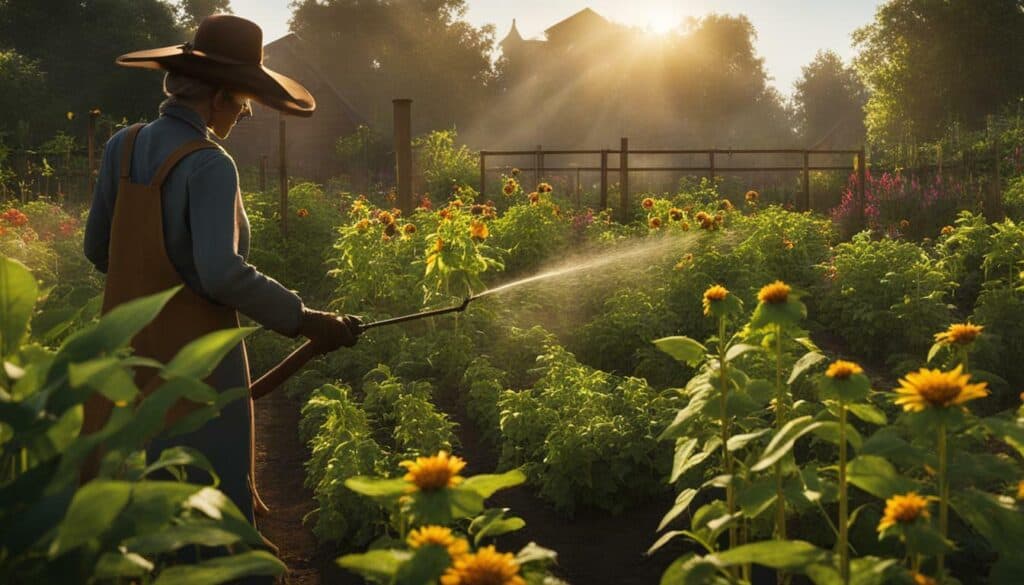
Gardening can be a rewarding and fulfilling activity, but it requires dedication and effort. Don’t be discouraged by setbacks or failures – gardening is a learning process, and each year you will become more knowledgeable and experienced. By tending to your garden regularly and providing the necessary care, you can enjoy the benefits of cultivating your own plants and reaping the rewards of your hard work.
Understanding the Needs of Plants
Remember that plants are living organisms with needs, and treating them well will yield numerous benefits for you and your environment. Gardening can provide an increase in oxygen production, free food and medicine, shade, tranquility, and exercise. However, to achieve these benefits, it’s essential to understand the basic principles of plant growth.
When starting a garden, consider factors such as location, climate, and purpose. Research which plants grow well in your area and their specific needs. It is important to choose a gardening spot with sufficient sunlight, good soil drainage, and appropriate moisture levels. Regularly tending to plants by removing weeds and protecting them from animals are also essential tasks.
To ensure the health and growth of your plants, it is crucial to have the right gardening tools and equipment. Using quality soil is equally important. Remember that plants require food, water, air, and protection to survive and thrive. Understanding the needs of plants is crucial for successful gardening.
There are different ways to acquire plants, including transplanting, seed sowing, or propagation. It is important to consider the climate and specific needs of each plant to ensure their successful growth.
Gardening can not only provide a variety of benefits, but it can also be a fulfilling and rewarding hobby. Through proper care and attention, you can watch your garden grow and flourish. So, don’t be afraid to get your hands dirty and start your very own garden today!
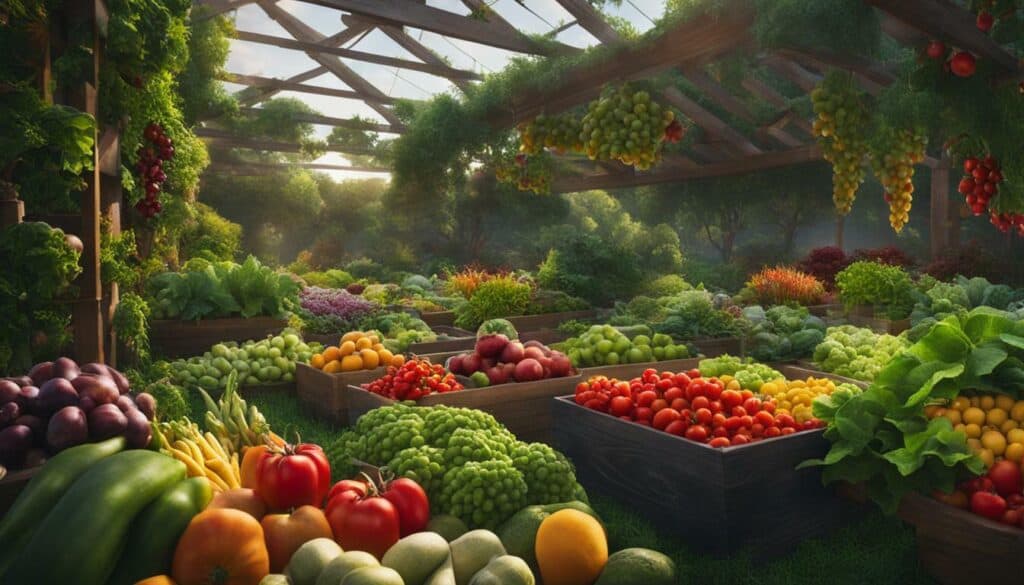
Acquiring New Plants
There are three ways to acquire new plants: transplanting, seed sowing, and propagation. Each method has its own benefits and challenges, but all can be rewarding experiences for gardeners of all skill levels.
Transplanting
Transplanting involves moving established plants from one location to another. This can be a great way to acquire new plants for your garden, especially if you have limited space or want to add a specific plant to your collection.
When transplanting, it’s important to choose a location that meets the plant’s specific needs. Consider factors such as sunlight, soil type, and drainage to ensure the plant will thrive in its new home. Be sure to also provide adequate care and maintenance, such as watering and fertilizing as needed.
Seed Sowing
Sowing seeds is another way to acquire new plants. This method can be especially rewarding, as it allows you to watch the plant grow from a tiny seed to a mature plant.
When sowing seeds, it’s important to choose seeds that are suitable for your climate and growing conditions. Follow the instructions on the seed packet to ensure proper planting depth and spacing. Be sure to also provide adequate care and maintenance, such as watering and fertilizing as needed.
Propagation
Propagation involves creating new plants from existing ones. This can be done through methods such as stem cuttings, leaf cuttings, or division.
When propagating new plants, it’s important to choose a healthy parent plant. Take care to use a sharp, clean tool to avoid damaging the parent plant or introducing disease. Follow proper propagation techniques to ensure a successful outcome. Be sure to also provide adequate care and maintenance, such as watering and fertilizing as needed.
When acquiring new plants, it’s important to consider the specific needs and requirements of the plant. Choose the right location in your garden and provide the necessary care and maintenance to ensure a successful outcome. With some research and patience, acquiring new plants can be a rewarding experience for any gardener.
Is the Plant Guide for Beginners a Comprehensive Resource for Starting a Green Thumb?
Looking to start your green journey? The Plant Guide for Beginners is the ultimate comprehensive resource for developing a green thumb. With clear instructions and helpful tips, this guide covers everything you need to know about selecting, caring for, and nurturing various types of plants. Whether you’re a novice or have some gardening experience, this resource is a valuable tool to help you kick off your green journey successfully.
Conclusion
With these tips, you can cultivate a green thumb and enjoy the rewards of gardening regardless of the size of your yard. It is crucial to consider various factors such as location, sunlight exposure, and time commitment when selecting what to grow. Understanding the purpose of your garden can also guide your plant selection. Paying attention to your plants and getting to know their specific needs is crucial to maintaining their health. Proper light, moisture, soil drainage, and protection are essential factors in growing healthy plants.
Setting reminders and observing your plants’ growth and health can help you stay consistent with their care. Gardening offers various benefits such as fresh produce, free medicine from medicinal plants, increased oxygen levels, exercise, and tranquility. It also allows us to connect with nature and contribute to a greener environment.
You can acquire plants through various means, such as transplanting, seed sowing, or propagation, and various sources such as stores, online vendors, plant swaps, and rescues. Regardless of how you obtain your plants, it is important to consider your climate before selecting what to grow.
By understanding these principles and treating your plants with empathy, you can enjoy the fulfilling experience of gardening. So go get your hands dirty and discover your green thumb!
FAQ
Q: Can I start gardening even if I have a small yard?
A: Absolutely! Regardless of the size of your yard, you can start cultivating a green thumb and grow plants as a beginner.
Q: How do I determine the purpose of my garden?
A: The purpose of your garden can be either for sustenance or decoration. Consider what you want to grow and what you want to achieve with your garden.
Q: How do I choose the right plants for my area?
A: Research what fruits and vegetables grow well in your area and their specific seasons. This will help you choose plants that are suitable for your climate.
Q: What should I consider when choosing a gardening spot?
A: It’s important to choose a gardening spot with adequate sunlight and proper drainage. Also, consider potential toxicity to children and pets before selecting plants.
Q: What tools do I need for gardening?
A: Invest in gardening tools such as gloves, shears, a rake, a garden hose, and rich soil. These tools will help you take care of your plants effectively.
Q: How often should I tend to my plants?
A: Regularly tend to your plants, remove weeds, and protect your garden from animals. This will ensure that your plants stay healthy and thrive.
Q: What are the benefits of gardening?
A: Plants are living organisms with needs, and treating them well will yield benefits like increased oxygen, free food, free medicine, shade, tranquility, and exercise.
Q: How can I acquire new plants?
A: There are three ways to acquire new plants: transplanting, seed sowing, and propagation. Consider the climate of your area when selecting plants.
Source Links
- https://portfarms.com/finding-your-green-thumb/
- https://realitydaydream.com/a-beginners-guide-to-a-green-thumb-keeping-plants-alive/
- https://gardenerspath.com/how-to/beginners/growing-plants-101/
- https://www.almanac.com/vegetable-gardening-for-beginners
- https://www.almanac.com/where-put-vegetable-garden
- https://hort.extension.wisc.edu/articles/beginning-vegetable-garden-basics-site-selection-and-soil-preparation/
- https://www.gardendesign.com/how-to/
- https://extension.okstate.edu/fact-sheets/basic-plant-care-understanding-your-plants-needs.html
- https://www.chelseagreen.com/2023/7-factors-to-consider-when-choosing-a-planting-site/
- https://www.theimpatientgardener.com/how-to-research-plants/
- https://www.gardensthatmatter.com/choose-garden-location/
- https://www.realhomes.com/advice/how-to-choose-plants-for-your-garden
- https://www.gardendesign.com/how-to/tools.html
- https://www.almanac.com/gardening-tools-guide
- https://www.eatingwell.com/article/17068/the-only-tools-you-need-to-start-a-garden/
- https://www.almanac.com/10-tips-beginner-gardeners
- https://commonsensehome.com/start-a-garden/
- https://letstalkscience.ca/educational-resources/backgrounders/needs-plants
- https://getbusygardening.com/propagating-plants/
- https://www.gardenersworld.com/how-to/grow-plants/gardening-for-beginners-how-to-plant/
- https://www.inspiritvr.com/general-bio/plants/plant-growth
- https://sites.google.com/a/hanalani.org/growing/conclusion

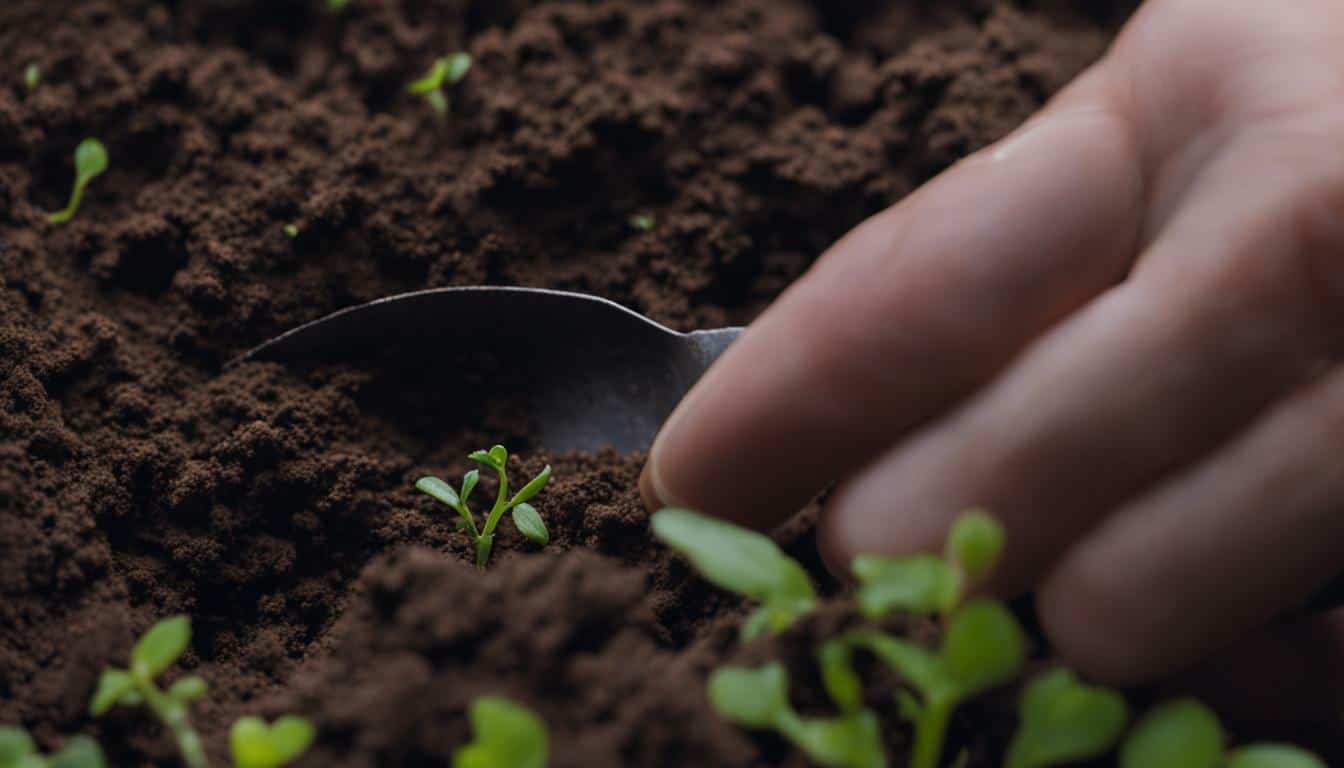




Leave a Reply